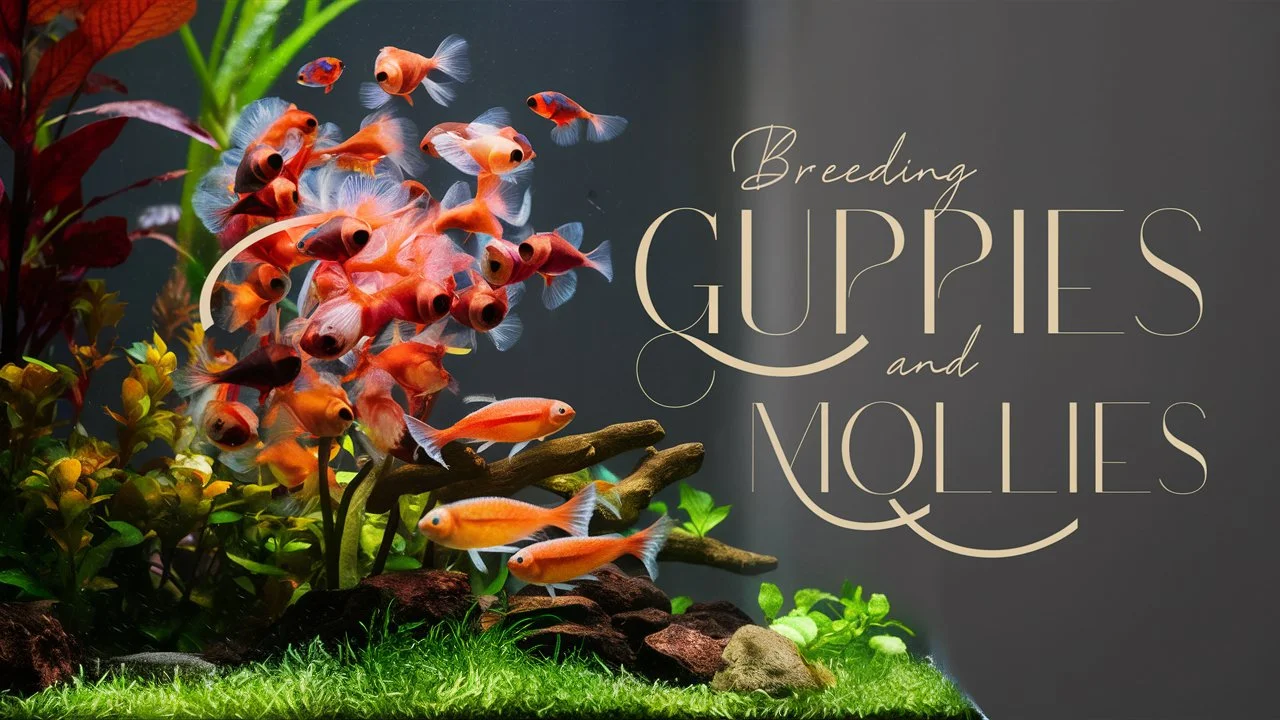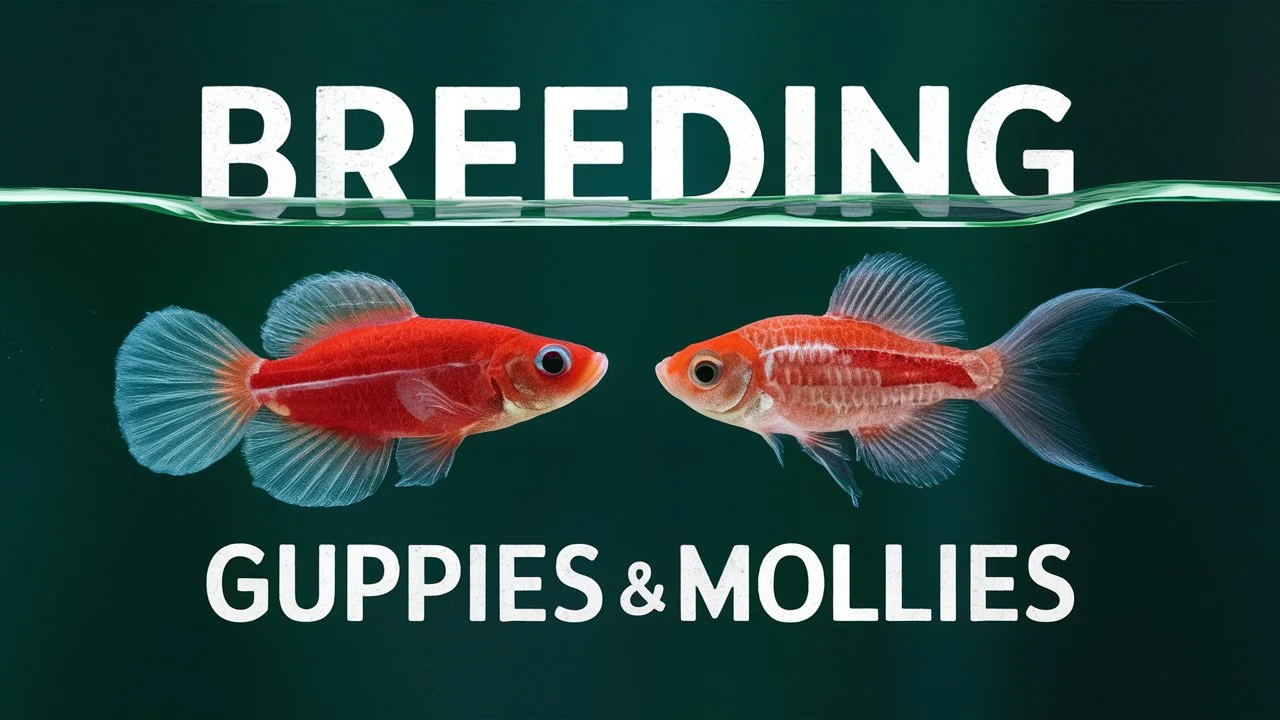Guppy and Molly fish are popular choices for home aquariums. They are colorful, active, and easy to care for. Many fish keepers wonder if these two types of fish can breed together. The simple answer is yes, Guppies and Mollies can breed together.
Both Guppies and Mollies belong to the same family called Poeciliidae. This means they are closely related and can sometimes have babies together. When a Guppy and a Molly breed, their babies are called hybrids. Hybrids can have mixed features from both parents.
However, breeding Guppies and Mollies together is not very common. Most fish keepers prefer to keep them separate because the hybrids might not be as strong or healthy as purebred fish.
If you are thinking about breeding your fish, it’s important to know that the babies might need extra care. Make sure to provide a good environment with clean water and proper food for the best chance of healthy hybrids.
Yes, Guppies and Mollies can breed together. They belong to the same family and can produce hybrid babies. However, these hybrids might need extra care to stay healthy.
Can guppy and molly fish breed?
Yes, Guppies and Mollies can breed together. These two fish are popular in home aquariums because of their vibrant colors and lively behavior. Both Guppies and Mollies belong to the Poeciliidae family, which means they are closely related and capable of producing hybrid offspring.
Related reading:The Easiest And Simple Way to Breed Guppies

How do they breed?
Guppies and Mollies are livebearers, meaning they give birth to live babies instead of laying eggs. The breeding process involves the male fertilizing the female internally. Here’s how it works:
- Mating: The male fish uses a specialized fin called a gonopodium to transfer sperm to the female.
- Pregnancy: The female carries the fertilized eggs inside her body until they hatch.
- Birth: After a gestation period of about 4-6 weeks, the female gives birth to live young.
What are hybrids?
When a guppy and a molly breed, their babies are called hybrids. These hybrids can have a mix of features from both parents, including colors, patterns, and body shapes. Here are some characteristics of hybrids:
- Appearance: Hybrids can look different from their parents, often showing unique combinations of colors and patterns.
- Behavior: Their behavior is usually a mix of both Guppy and Molly traits.
- Health: Hybrid fish might be less robust than purebred fish and may require more attention and care.
Extra Care for Hybrids
Hybrids might need extra care to stay healthy. Here are some tips to ensure their well-being:
- Clean Tank: Maintain a clean and well-filtered tank to provide a healthy environment.
- Proper Diet: Feed them a balanced diet with high-quality fish food suitable for both Guppies and Mollies.
- Water Conditions: Keep the water parameters stable, including temperature, pH, and hardness, to mimic their natural habitat.
- Monitoring: Regularly check for any signs of illness or stress and take action promptly.
What Does a Guppy-Molly Hybrid Look Like?
A Guppy-Molly hybrid, often called a “Golly” or “Muppy,” can have a unique and varied appearance due to the mix of traits from both parent species. Here are some common characteristics you might notice:
Body Shape
- Size: Hybrids are typically similar in size to Mollies but they can sometimes be smaller, closer to the size of Guppies.
- Shape: The body shape can be a blend of both parents. They may have the streamlined body of a Guppy or the slightly bulkier body of a Molly.
Fins
- Dorsal Fin: The dorsal fin may be larger and more pronounced, similar to a Molly, or smaller like a Guppy’s.
- Caudal Fin: The tail fin (caudal fin) can vary widely. It might be fan-shaped like a Molly’s or more slender like a Guppy’s.
Colors and Patterns
- Colors: The color of a hybrid can range from the bright, vibrant colors of Guppies to the more muted tones of Mollies. Common colors include shades of blue, red, yellow, orange, and black.
- Patterns: Patterns can be quite diverse. Hybrids might have the spots or stripes typical of Guppies, or the more solid or marbled patterns of Mollies.
Other Features
- Scales: The texture and appearance of scales can also vary, often reflecting a mix of the smooth, sleek scales of Guppies and the slightly rougher scales of Mollies.
- Head and Eyes: The head and eye shape are usually a combination of both species, with no distinct, predictable look.
Examples of Hybrids
Each hybrid is unique, and no two hybrids look exactly the same. Their appearance depends heavily on the specific traits inherited from their Guppy and Molly parents. This unpredictability makes hybrids fascinating to observe and a special addition to any aquarium.
How to Breed Guppy and Molly Fish?
Breeding Guppy and Molly fish together can be an interesting and rewarding experience.
Here’s a step-by-step guide to help you successfully breed these two types of fish:
1. Preparing the Aquarium
Tank Size: Use a tank that is at least 20 gallons to give the fish enough space to swim and breed.
Water Conditions:
- Temperature: Maintain the water temperature between 75-82°F (24-28°C).
- pH Level: Keep the pH level between 7.0 and 8.5.
- Hardness: Ensure the water hardness is between 10-25 dGH.
Filtration and Aeration: Use a gentle filter to keep the water clean and provide good aeration without creating strong currents.
2. Selecting the Fish
Healthy Fish: Choose healthy, active Guppies and Mollies. Look for fish with bright colors and no signs of illness.
Male-to-Female Ratio: Have more females than males to reduce stress. A good ratio is one male to three females.
3. Creating a Breeding Environment
Plants and Hiding Spots: Add live plants and decorations to provide hiding spots for the fish. This helps reduce stress and gives the female a place to hide when pregnant.
Diet: Feed the fish a high-quality diet with a mix of flake food, live food (like brine shrimp), and frozen food. This ensures they are healthy and ready to breed.
4. Breeding Process
Introducing the Fish: Place the Guppies and Mollies in the breeding tank. Allow them to acclimate and settle in.
Mating Behavior: Watch for mating behavior. The male will chase and display his fins to the female. He will use his gonopodium (a modified fin) to fertilize the female.
Pregnancy: After fertilization, the female will become pregnant. You may notice a dark gravid spot near her rear fin, which indicates she is carrying babies.
5. Caring for Pregnant Females and Fry
Separate the Pregnant Female: Once the female is visibly pregnant, you can move her to a separate breeding tank or use a breeding box within the main tank to protect her and the fry (baby fish) from being eaten by other fish.
Birth: The female will give birth to live fry after about 4-6 weeks. The fry are tiny and will swim immediately.
Feeding Fry: Feed the fry high-quality, finely crushed flake food, baby brine shrimp, or specialized fry food. Feed them small amounts several times a day.
Protecting Fry: Keep the fry in a separate tank or breeding box until they are large enough not to be eaten by adult fish. Provide plenty of hiding spots with plants.
6. Raising the Fry
Water Quality: Maintain excellent water quality with regular water changes and monitoring.
Growth: The fry will grow quickly. As they get bigger, you can gradually introduce them to the main tank with the adult fish.
By following these steps, you can successfully breed Guppies and Mollies and enjoy watching their unique hybrid offspring grow and thrive.
Conclusion
In summary, Guppies and Mollies can breed together and produce hybrid babies. While these hybrids can be fascinating and unique, they may require extra care and attention to ensure they grow up healthy and strong. With the right environment and proper care, hybrid Guppy-Molly fish can be a beautiful addition to your aquarium.
